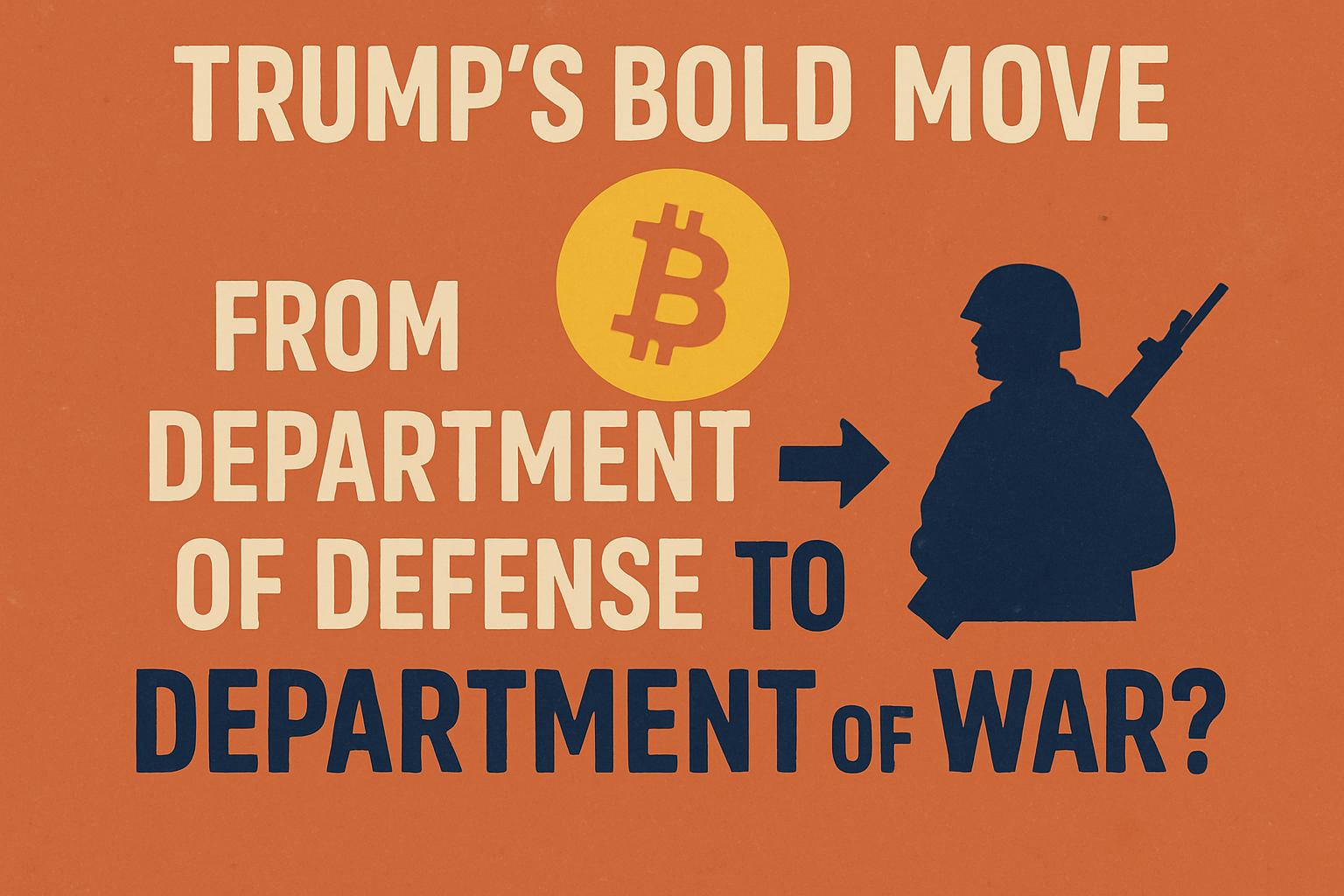The political stage in the United States is once again set ablaze as President Trump announces a controversial proposal. He has revealed his intent to transform the Department of Defense back to its former name, the Department of War. This potential rebranding is sparking widespread debate and reigniting discussions around America’s military policies.
A Return to Offense?
In a surprising announcement made during a joint press conference with the South Korean President, Trump vocalized his opinion that the department’s name should revert to its origins, famously stating, “When we won World War I and World War II, it was the Department of War. That was the real name.” Trump’s rhetoric underscores an inclination towards an offense-first mentality, shifting away from a purely defensive posture.
The Historical Context of the ‘Department of War’
The Department of War is not a concoction of fantasy but a historical reality, having existed from 1789 until 1947. It functioned as the operational heart of the U.S. military’s command structure. President Truman reformed it, transforming the armed services into unified branches under a centralized Department of Defense. This change was aimed at streamlining interservice operations and dispelling the previously prevalent chaotic autonomy, particularly within the Navy.
Rekindling the Warrior Ethos
Pete Hegseth, the current Secretary of Defense, stands aligned with Trump on this matter. An advocate for reigniting what he terms the “warrior ethos,” Hegseth has publicly criticized the department’s current nomenclature. He even initiated a poll on his social media platform, offering followers the choice between the two names, with “Department of War” emerging as the favored option.
Challenging Political Correctness?
President Trump attributes the original name change to the rise of political correctness, lamenting what he perceives as a retreat from historical roots. “We became politically correct, and that’s why we changed it,” Trump declared, revealing his disdain for modern governance practices. Supporting this sentiment, Vice News Secretary Anna Kelly emphasized Trump’s commitment to placing genuine warriors in the Pentagon, steering the narrative away from diversity and inclusive ideologies.
The Role of Congress
Despite Trump’s firm stance, renaming the Department is not simple. The existing legislative framework, established by a 1947 act, mandates congressional approval for such a change. The Department of Defense remains tactful, redirecting inquiries to the White House while awaiting potential congressional debates.
Symbolism Over Strategy?
Analysts suggest Trump’s proposal might be more symbolic than strategic, serving to bolster his image as a staunch military advocate without necessarily altering the course of foreign conflicts. During his prior term, Trump focused on avoiding unnecessary wars. His latest “name change battle” further captivates public attention and enlivens his base’s appetite for a robust military stance.
This proposal, although still in the realm of political discourse, reflects Trump’s penchant for dramatic policy maneuvers that resonate on an emotional level with his supporters, signaling his ongoing quest for a formidable American military image.

![[News] Bitcoin at a Turning Point? 10x Research Signals a Bullish Macro Shift Ahead](https://cryptoexplores.com/wp-content/uploads/2025/06/new20250616.jpg)
![[News] Binance Lists $HOME, the Gas-Free, Bridge-Free All-in-One DeFi App](https://cryptoexplores.com/wp-content/uploads/2025/06/news20250617.jpg)